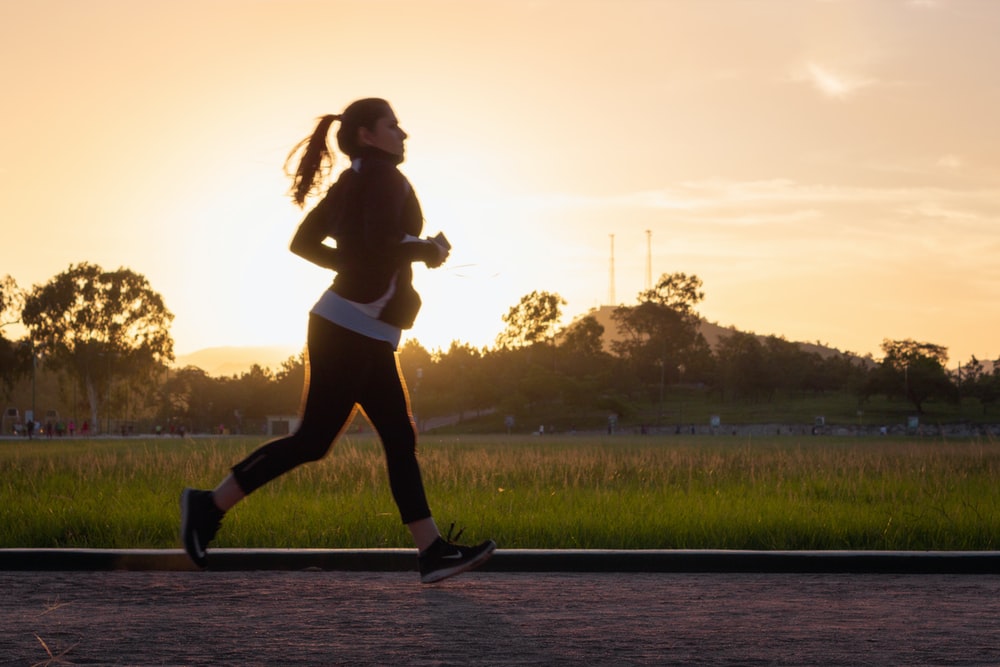Western States Endurance Run 2022 – Race Report
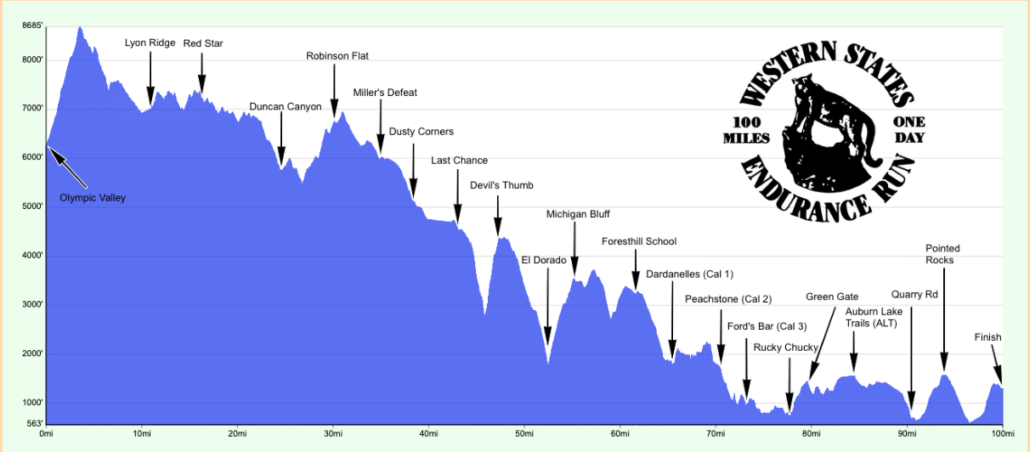
WSER RACE REPORT 2022 – beware, its as long as the race!
Western States Endurance Run. Wow. Its one on many peoples bucket list but so hard to nab a ticket that it’s a pipe dream for many. Year after year you have to maintain your ticket count by qualifying in a 100km event. So you have to keep up your fitness to run the 100km qualifier first of all and then be fit enough to get through this tough 100mile event. Lucky I love what I do and just keep training all year round so keeping the ticket count hasn’t been too hard.
My WSER journey started in 2015 when I had a moment after doing UTA100 and realised that I could throw my hat in the ring for WSER after chatting to another running mate. It was really not even on my radar before that. I kind of entered for shits and giggles thinking it was unlikely I’d get in anyway. But once that ticket was in and I got the first email to say I was in the lottery I started getting excited, made the family watch Unbreakable (under duress 😉) and started to really look into and follow the race. I now wanted that ticket!
The 2015 lottery was held and of course, no luck. 2016 I did Tawarera 100 in NZ so had another qualifier for the 2017 race, but nope, not this time. 2018, no luck again. I used my one time only BYE this years to maintain my ticket count as I did Elephant Trail Race instead of one of the listed qualifiers in Australia. (there are only 3 races use can use to qualify). I now had 4 tickets (they start at 1 and double each year but you get nothing for using a BYE). Then came the two COVID years so we maintained our tickets but didn’t gain any. By this stage I should have had 32 tickets but still only had 4.
2021 I ran UTA100 and entered again which gave me 8 tickets and FINALLY, on Dec 4th “Simonee Hayeses from Jimmyea Bay Australia” was called out! 😊 We were going to WSER in 2022!
Training started in December with gusto and I was feeling great and then of course, bloody COVID struck. Initially I wasn’t too sick, just a bit of a cold and tired the first week. I went back to work and training the week after and in hindsight, this was a dumbass move. Being asthmatic the second and 3rd week of Covid combined with doing too much really bit me on the ass and I ended up with a really bad post-covid infection which took months and countless courses of antibiotics and treatment by a specialist to get over. The specialist was doubting my chances of being able to run at WSER. He got me there in the end, but I had a delayed start to my training which wasn’t ideal but ended up with a good block for a couple of months and was finally confident that I could stand on the start line and finish the event under 30 hours.
Fast forward to Race week!
We arrived in Olympic Valley on Monday afternoon after some sightseeing in LA for a few days. What a change in landscape as you drive from Reno to Olympic – my eyes were bulging at the scenery (Marc’s eyes were bulging trying to learn to drive on the wrong side of the road for the first time! He did this brilliantly though and managed to cover over 1000km in 5 days with no issues – so proud of him!). As we turned off at the Squaw Valley sign the main mountain that we start the race in came into view and it really was breathtaking – snow capped and HUGE! I could see the first climb of the race – gulp!

We checked into our hotel which was a one minute walk to the start line in the Olympic Village. Had a quick look around, it was more like being in the Swiss Alps than in the US! We then drove into Tahoe City to get a few supplies for the room and some dinner which we ate in our room as we were pretty buggered.
The next couple of days we did sightseeing, drove all the way around Lake Tahoe and visited Truckee and a few other places. I had a quick run in the morning along the flat path that follows the road and could not believe how out of breath I felt! It was a bit unnerving as I didn’t think the altitude would affect me that much. We were at 2000m elevation in Olympic Valley – Kosciusko is 2200m and I haven’t noticed it up there before, but maybe not been there long enough to feel it. We all had bleeding noses and dry coughs and scratchy throats after a few days but otherwise felt fine.
My next run on Wednesday morning had me exploring the first climb of the race where my breathing actually felt better than the flat run the day before. I met another runner from Singapore so we ventured up a fews kms together and had a photo in the snow. I told Marc I’d only be about 30mins but lost track of time talking (not like me 😉 ) so when I looked at my watch and we were still climbing after 40mins I told my new friend I had to get back! So we enjoyed the nice run back down the hill. Marc texted me to ask where I was as he was waiting at the pool for me – he figured I’d met someone! Oops!
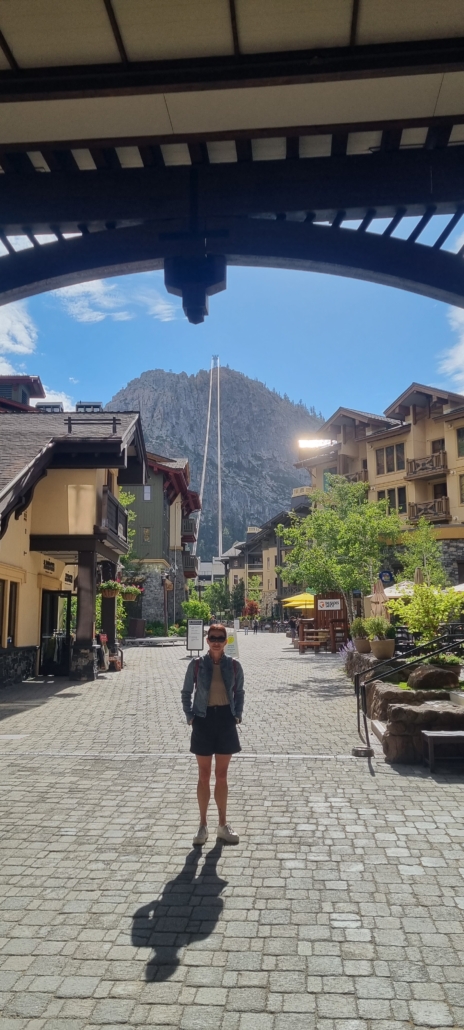
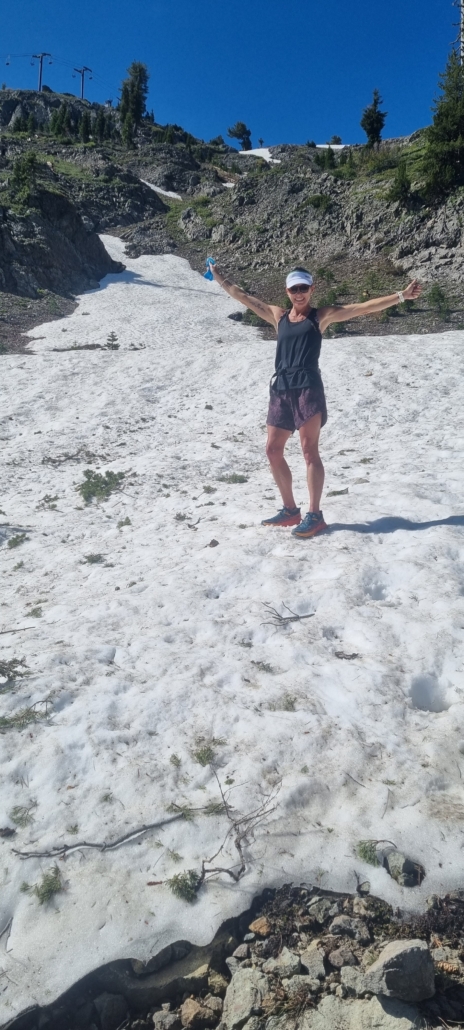
Wednesday evening the crew arrived (Kristen Brace, Belinda Simpson and Shane who was crewing mate Ewan Horsburgh) so we had dinner with them before another early night as they were stuffed.
Thursday all the race festivities kicked off and you could feel the excitement with all the runners starting to arrive. I met most of the other Aussie runners which was really cool. This day was meant to be the flag raising ceremony up at High Camp (near the top of the climb that we start on) but the aerial tram was closed due to a storm forecast so they held it on the grass at the start line. This was really special and there weren’t a lot of people there so it felt quite intimate. I met and got to chat to some of the board members of WSER that were so lovely and welcoming and gave us so much advice on the race. My new bestie Dennis is the Aid Station Captain of Devils Thumb (47.8miles) and has been doing this role for 30 years! Devils Thumb is the aid station you come to after the long hot section through the canyons so there is a lot of carnage there so his advice was amazing. Every time he saw me over the next two days he said “get off your feet!”.
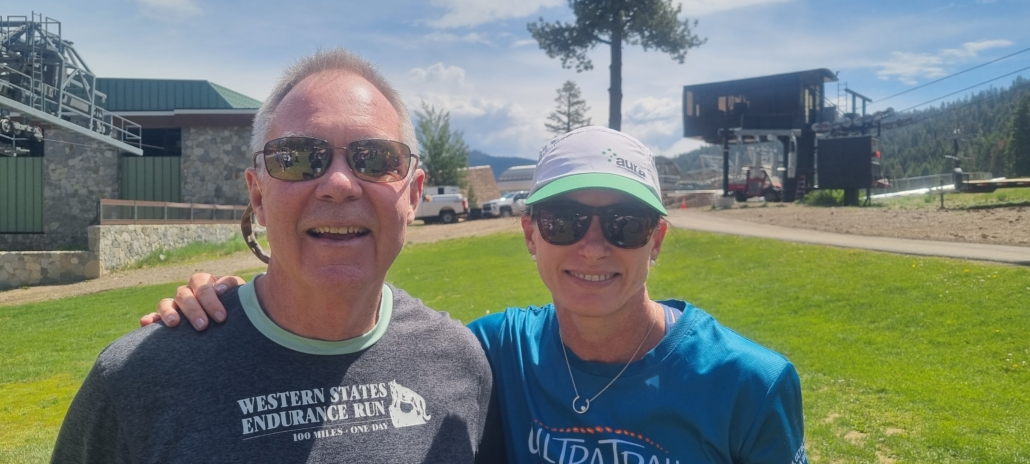

We had dinner that night with the crew again and Ewan and his family at a great restaurant on Lake Tahoe, then caught up with Vicki & Chris (my travelling roadies 😊 ) who had arrived that night before heading off to bed.
Friday was a super exciting day with race rego. A quick run with Kristen and Shane in the morning and then I lined up with Ewan and we made our way through the very organised race rego process, being greeted like rockstars by each person in the process from bib collection, to photos and then through to getting our race pack goodies. I really couldn’t get the smile off my face! Then it was a shop fest in the WSER store to buy lots of race bling. Think I’ll be wearing WSER clothes for the next year! We also got the tram up to the top to see what we missed out on the day before and wow so glad we did. It was amazing up there!
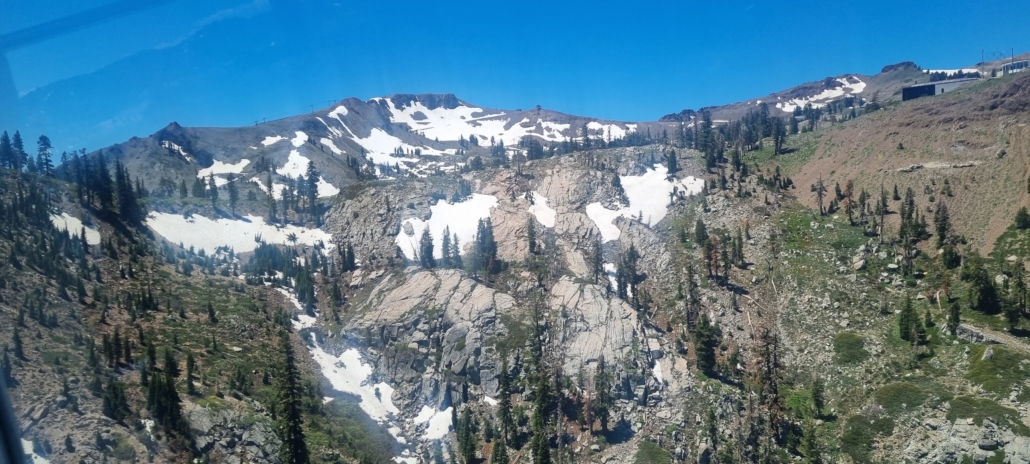
The afternoon brought the race briefing which was out on the grass and very hot but still exciting to be there.
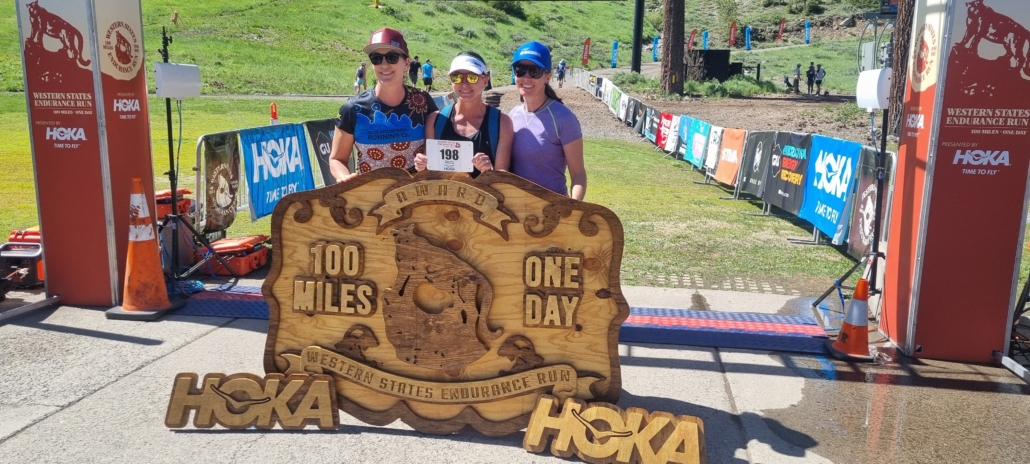
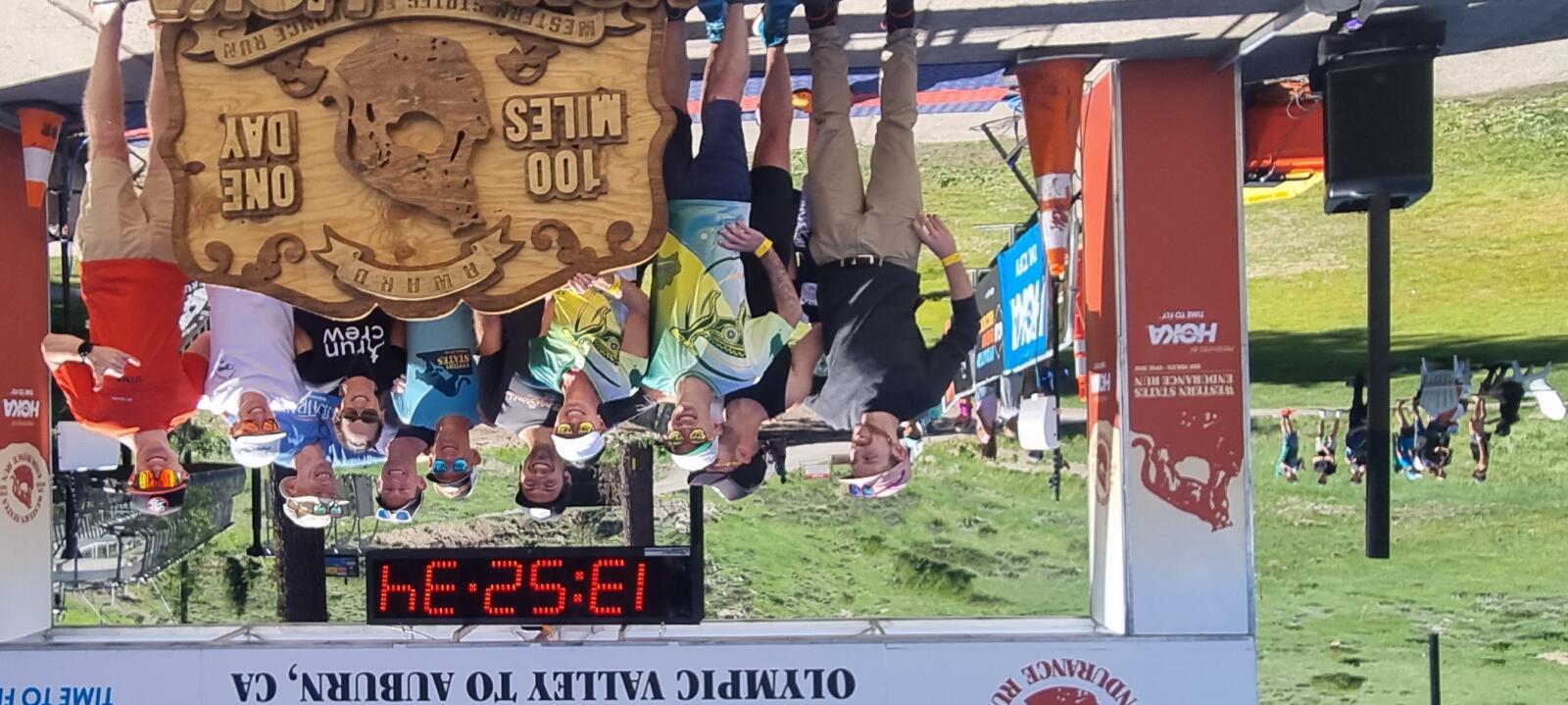
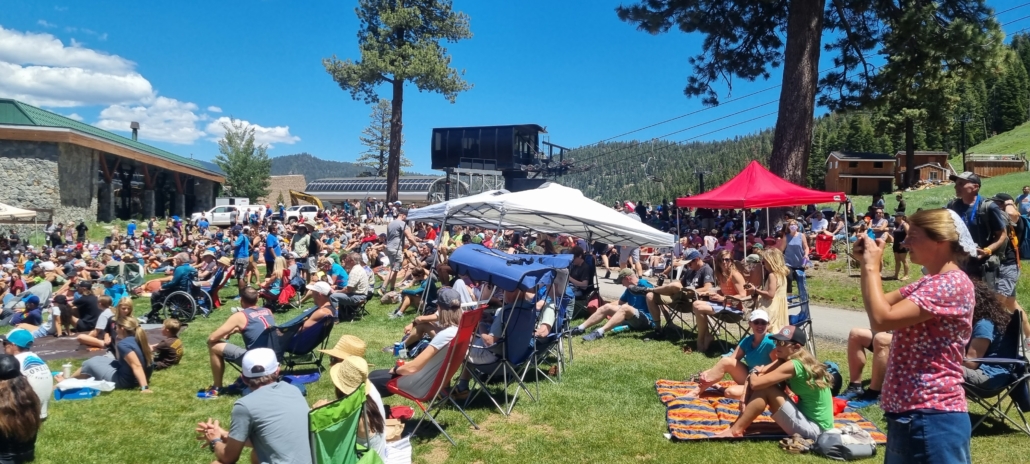
Then it was time to pack our bags to check out the next day and put my feet up and chill for the night, quick crew meeting and then the crew went out for dinner and I had a quiet night in with a microwave meal and chatted to the kids. Alarm was set for 3.30am and off to bed we went, I actually slept quite well!
Race morning arrived and I woke up feeling really calm and relaxed and just ready to get on with it. I went through my usual pre-race ritual getting ready, eating some porridge, cup of coffee, sorting out feet and lubing up everywhere to avoid chafe seeing I would probably be wet for most of the race (this worked a treat and I had no blisters and no chafe!) and then it was time to head to the start line. It was still dark and a bit cool but exciting to see the start line and the countdown clock said 20mins. Enough time to do another loo stop!

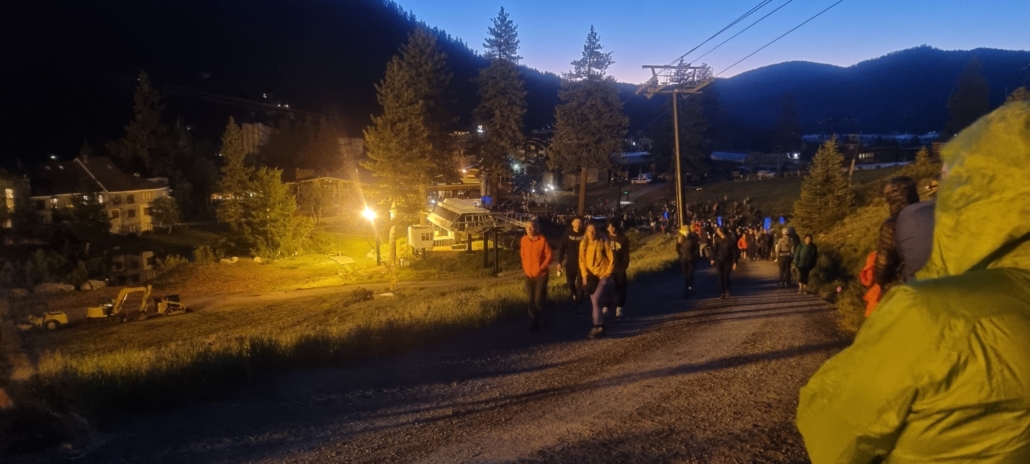
I lined up with Ewan and saw two other Aussies Michael Duggan and Troy Lethlean (the main man that looks after me with Spring Energy Gels). We wished each other good luck and then the crowd called out the countdown before the shotgun went off. And then up the hill we went! The track was lined with people cheering and taking photos and was lit up by floodlights so no need for a headlight. I spotted the crew and had a big wave and scream and was gone.
I took it super easy up this climb as was warned about the altitude and advised to take it easy for the first 30miles. This first climb up to the escarpment took me 55mins and I enjoyed every step, chatting to heaps of people. Before we knew it we were on the steepest part of the climb up to the escarpment and could see the top and all the people waiting there and cheering. I’d met a Canadian girl Chelsea on the climb and we were so excited – we hit the top together and turned around to look back at the sun rising over Lake Tahoe and we just screamed and hugged and shared a tear of excitement – it was mind blowing and nice to share that moment with someone as excited as I was!

Then it was into what was the first of many miles of single track. The next 10miles was through the high country and a little snow, fields of sunflowers and amazing trails. It was much rockier than I had expected so I took it super easy – I was not going to blow an ankle here! I was conscious of Dennis’s words about being careful through here while the altitude was still high. It felt Ok mostly but at times I could feel pockets where it felt harder to breathe than others. I just trotted along sensibly – I kept saying the easier you go now, the better you’ll feel at Foresthill (100km) and that was my mantra for hours.
Lyon Ridge Aid Station was the first one we came by at 10.3miles and that was fun – my first taste of what the next 90miles of WSER aid stations would be like. You’d arrive and 3 people would rush to you to see what you wanted – I was in an out like a pit stop! It was still cool here so no need for ice etc so no need to hang around long. Aid station #2 was Red Star at 15.8miles was similar again, in and out.

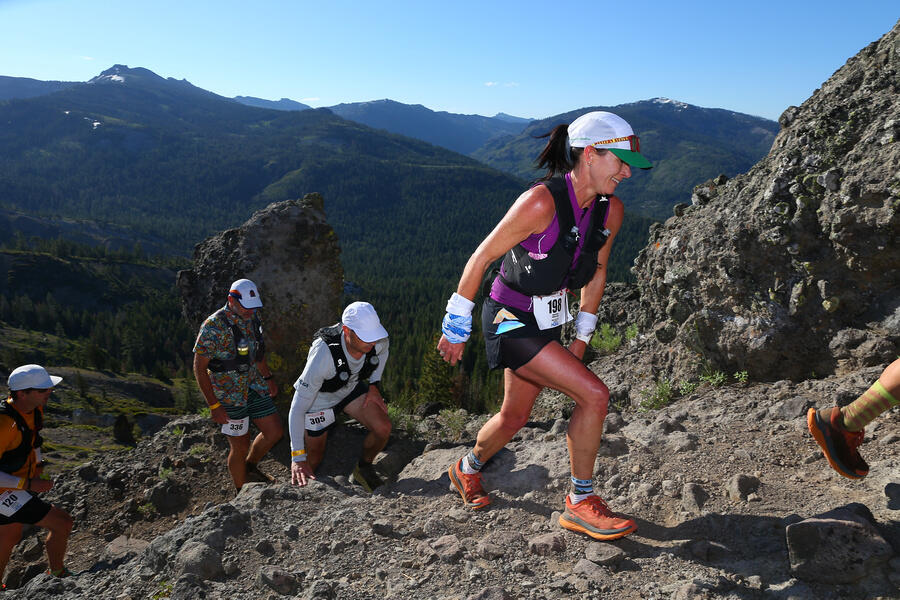
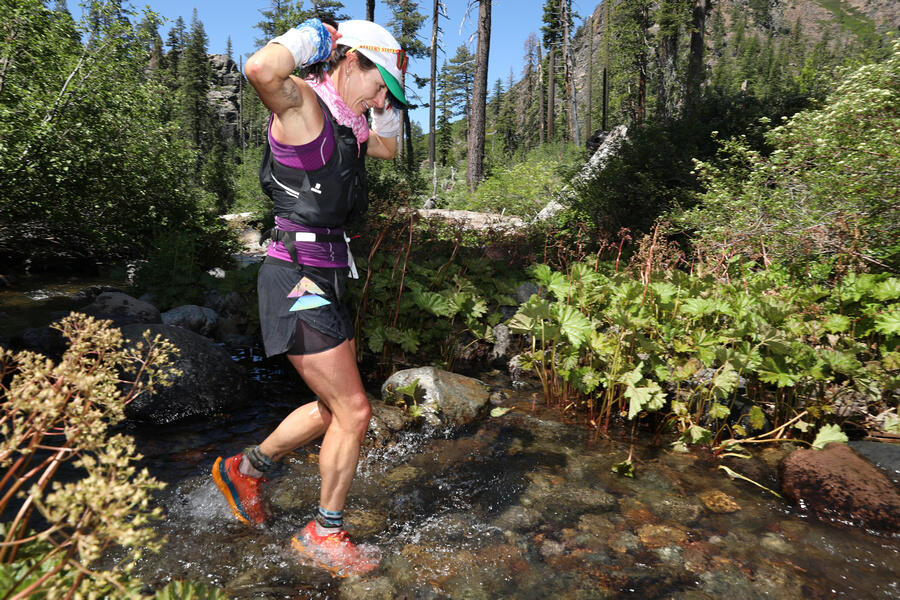
Duncan Canyon was 24.4 miles and this was where the altitude started to feel better as we started to descend. It was also getting hot and this was where I got my first ice bandana. There was so much ice in it that it weighed a tonne and choked me a bit so had to get used to it. This was a spectacular section, the views were breathtaking. I was running along with Kaci Licktieg (previous winner) and Meghan Canfield (multiple top 10 finisher) for a long time, we kind of zig zagged each other and I thought I probably shouldn’t have been with them but felt good so just plodded along. I also ran with another top 10 finish finisher Erica for a while and she was giving us lots of good tips and showing us how it was done in the creek crossings – it was getting hot now so they were very welcome to dunk in! It was a nice girls pack I was with for quite a while.
Finally I reached Robinsons Flat and it was pretty hot by now, around 38degrees. This was the first time I saw my crew so that was exciting – it was a massive aid station. They had me in and out faster than I expected as I was behind time on the splits I gave them but I wasn’t worried, I was just running to feel, not looking at my clock at all. They seemed more concerned than me with the time and rushed me out of the aid station – the only time they forgot a few things 😉 The next time I saw them they had it all sorted 😊.
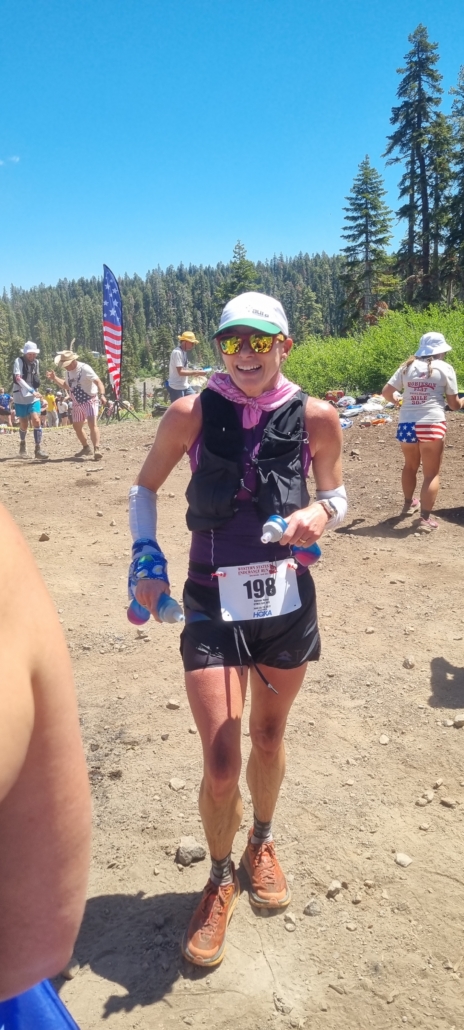
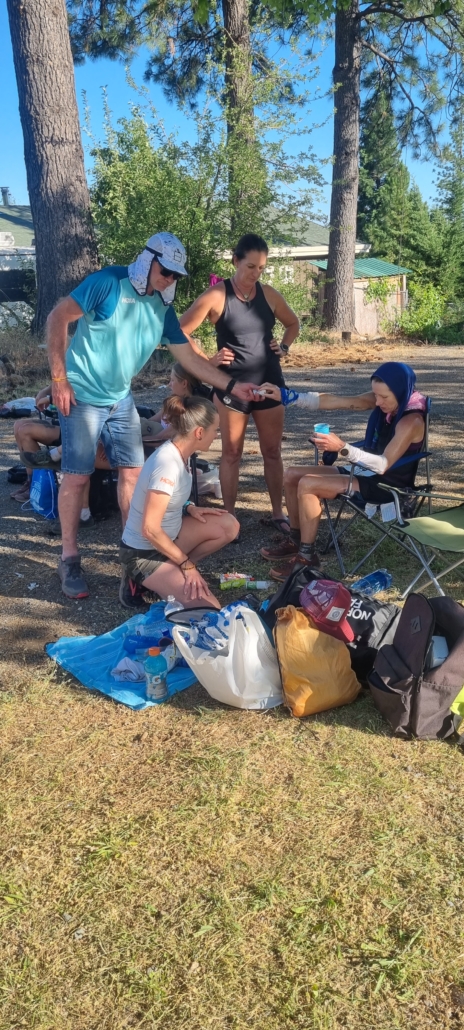
After I left Robinsons it was off to start the long 30ish mile trek through the Canyons. The first part was some nice running along a firetrail and then through aid stations at Millers Defeat, Dusty Corners and Last Chance – nothing here felt overly challenging other than the distance already covered and the heat. But the aid stations dumped buckets of ice water on our heads (took your breath away!) hosed off dust, reloaded our ice bandanas and drinks and sent us on our way – they were amazing.
It was now time to start the first steep descent into the first of 3 canyons. It was hot, reaching high 40’s, dusty, and really technical downhills that went down forever, and you kept thinking the longer I go down the longer I have to climb back up! The first checkpoint coming up out of the first canyon and the hardest climb of the day I thought, was Devils Thumb. I’d been looking forward to this one to see my new mate Dennis and he greeted me with open arms and a big hug, but didn’t let me hang around long! Dennis said the climb would take me an hour but I got up it in 39mins (I was timing it so I knew how much longer I had to suffer that section!) He explained the next Canyon was longer but not as steep and there was a great view. Off I went! Down, down, down. Obviously the view would be on the way up as all I saw was piles and piles of fresh bear shit which had me on edge and moving for fear of bumping into one of them! I was on my own for most of the canyons so had my eyes peeled for everything – bears, rattlesnakes and cougars! 😊 and of course it was very technical so you really had to concentrate here.
At the bottom of this canyon it was a relief to see the El Dorado Aid Station and a beautiful stream under the bridge we crossed over. Here I could top up with fresh ice and rinse off in the stream. Unfortunately this was where my nausea started to rear its head and I had my first big chuck as I started to climb back out but I felt so much better after it and soldiered onto the top. I just wanted to get this section done. But there was a nice view at one point as promised. At the top of this was the next aid station was Michigan Bluff and I saw my crew here so it was a welcome sight to see a chair and their faces as the canyons took a bit out of me. I decided to have a sit for a few minutes and get some food and fluids back in, not that much food was going in. After this I left still feeling a bit nauseas but trudged on. At one point I passed Aussie Alan Wheat who wasn’t feeling great, it was the first time I’d seen him all race. He was looking for his crew. I decided I’d take an anti-nausea tablet and gave one to Alan as well. (little did I know this was my last one and I’d need it later but shit happens and in the moment I was happy to help).
Leaving Michigan Bluff we headed into yet another canyon (I’d missed this one on the map!) and then finally we were at Foresthill aid station, the 100km mark and where I picked up Kristen my pacer. I was still feeling pretty nauseas here and not much food was going in, I was relying on fluids and ginger beer and anything I could put in that would stay in. My legs felt fantastic after all the downhill so far, I just wished my stomach would play nicely. The next section is all a bit of a blur, Kristen chatted away to keep me occupied, there was some nice runnable sections here so the miles just sort of came and went along with a few aid stations. Here I was taking in some hot broth and ginger beer, about the only thing I could get down along with electrolyte drinks. The vomits though decided to keep coming from about Peachstone Aid Station at 70miles to the end. As I was mainly taking in fluids it was just a whole lot of fluids coming back up. I’d feel better for a while and keep trying to replace what I’d lost only to have it happen again each hour. I just resigned myself to keep moving as this was how it was going to be.
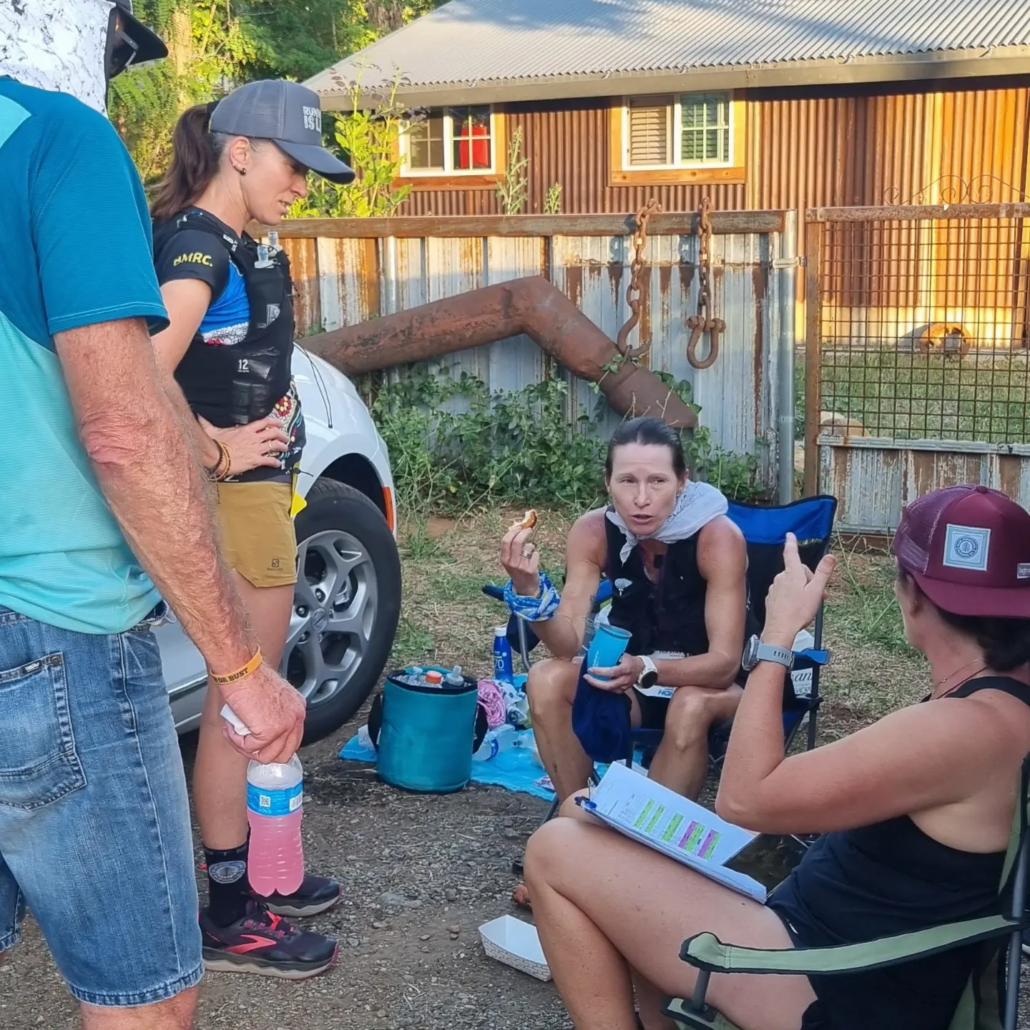
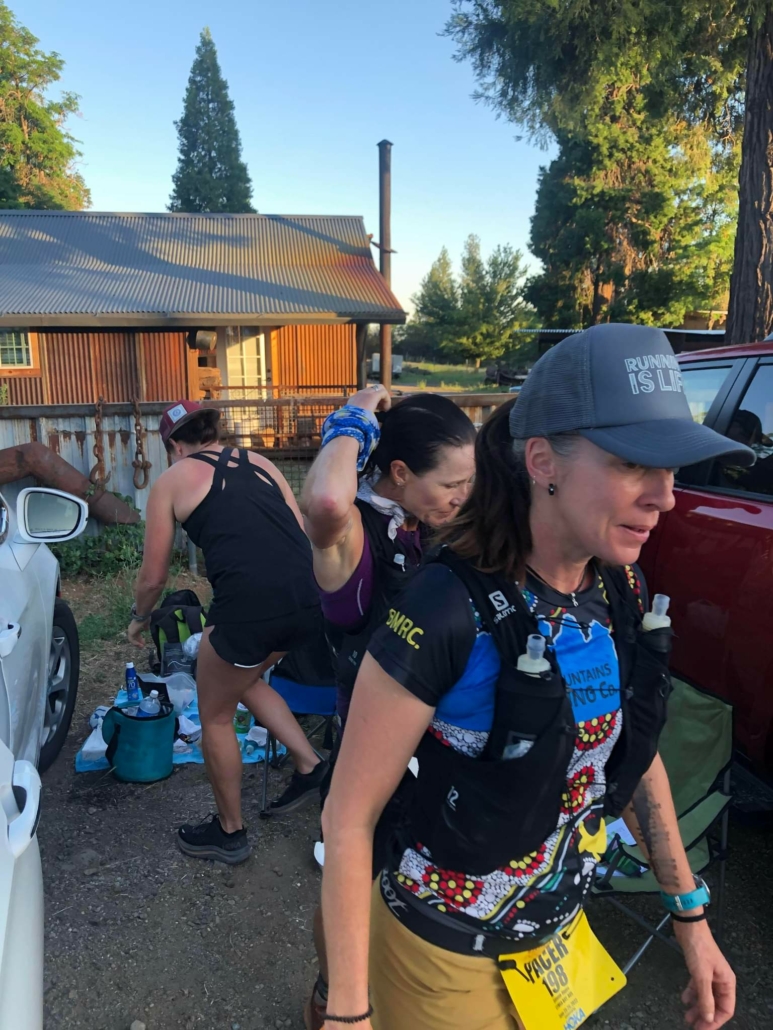
It was now dark and we were moving fairly well through the technical single track that was leading us down to Rucky Chucky River. Run a section, walk a bit. Repeat. It was great to finally see this spot as they say if you can make it to Rucky Chucky you can finish the race. I was hoping to feel a bit refreshed after the crossing but it was bloody freezing and hard work in the dark! They put a glow stick around our necks and then we headed into the ice river guided by a rope and about 20 people lined along it guiding us over the rocks, into the holes, telling us where to put our feet etc. The river is about 50m wide from memory. I couldn’t bring myself to duck my head under and wake myself up as it was too cold!



After the river we climbed about 3kms up a hill to the Greengate Aid Station where Marc and Belinda were waiting after a 1.5mile hike downhill to meet me – super crew! They could have been at Rucky Chucky but I really wanted to changed my shoes and clothes after the river, take off my pack and feel fresher for the last 20 miles and it was worth it as I did feel better. Although as we left them my vomiting really kicked it up to a new level – what ever I ate at Greengate swiftly came up and that’s pretty much how I stayed until the finish. From Greengate, Auburn Trails Aid Station to Quarry Rocks the course was mostly dark single track and Kristen was able to push me along here as we were still in sight to possibly crack the 24hour mark so we gave it a shot. Just as we thought we may be able to do it we hit the long climb leading up to Pointed Rocks. WTF?? This went on FOREVER! On a training run you could run it but 85miles into a race and vomiting non stop there was no way. I just had to keep trudging on and walk it, knowing the time was ticking away. I had barely nothing left in my reserves as I hadn’t eaten in ages but my legs kept moving forward. I felt bad for Kristen that I couldn’t give anymore. One highlight was seeing Hal Koerner and Scott Jurek at the aid station – bugger I didn’t have a phone and K’s has stopped working so we missed a great photo opp!
We got to the end of this climb finally and saw the crew at Pointed Rocks and here I knew my silver buckle was gone but a finish was definitely going to happen so I decided to back off and just to what I had to do to get it done and try and limit the suffer fest as much as possible, I wanted to enjoy the finish and not be miserable.
One final long single track that took us down to No Hands Bridge which was beautiful and all lit up with blue fairy lights. Kristen said come on, we need to run No hands so I sucked it up and ran the length of the bridge, maybe it was 250m long? As soon as I got to the end I promptly threw up again so we decided no more running until the last couple of kms. From here I literally vomited my way to the next aid station (the final climb) to Robie Point. I was really dizzy here and completely spent. I had to sit in a chair for a minute and I had a few sips of Coke hoping it would get me to the finish line. The medic said there was nothing he could do – showed me his buckle and that was enough to get me out of my chair and head off to a round of applause from the aid station guys.
Up a short hill and around a bend we came to all the locals that were camped out in chairs with lanterns in the trees and fairy lights everywhere and they gave me the biggest cheer and the smile returned to my face as I knew I was nearly done. Once we started to go back downhill again and I could see the HOKA sign that took us over a bridge and finally into the track I started to run and we didn’t stop until we crossed that line. Belinda met us and gave us an Aussie flag before the track and then in we went, to Placer Stadium and we had 300m to run to the finish. The commentators were doing a little spiel about me and there was a cameraman running along beside me for the live feed I assume. Coming down that final stretch was amazing and I was just so stoked to see Marc, Vicki, Chris and Belinda and cross that line in 25hours and 31minutes. The relief was huge! Not quite 100miles in one day but close and the best I could give on the day.

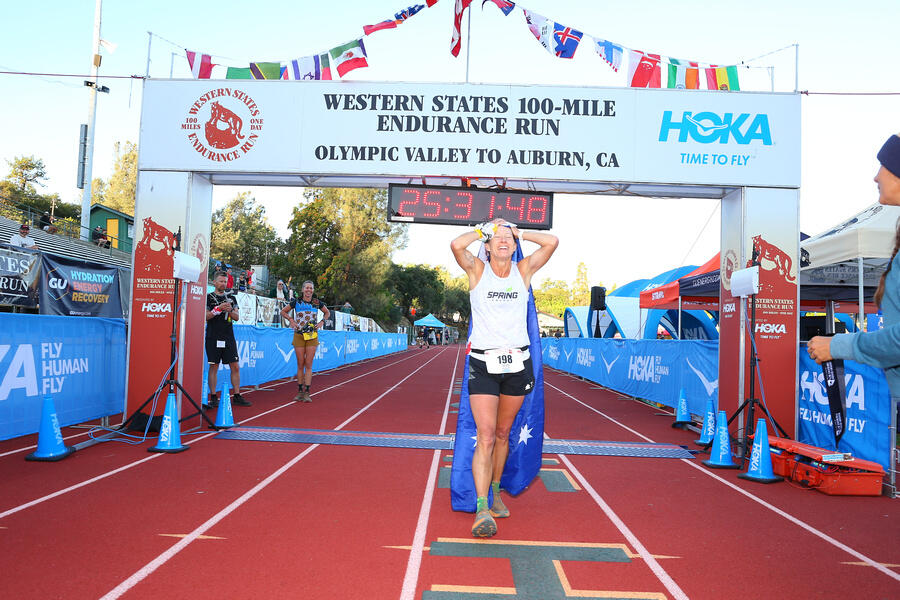
WSER – that was one of the most amazing experiences I have ever had. It was brutal, beautiful, terrifying, exhilarating and just the most brilliant experience. I feel so privileged to have been able to take part in this race. It was the 8th hottest on record in its 49 years and it threw everything at me but I embraced it all, as it really is a once in a lifetime experience.
Huge thanks go to my crew and pacer, you followed me around all day and night in the heat, had challenge driving to do on the wrong side of the road, had to trudge to aid stations with all my gear I probably didn’t even use and you just kept me going. You guys worked so hard and I appreciate you being there so much.
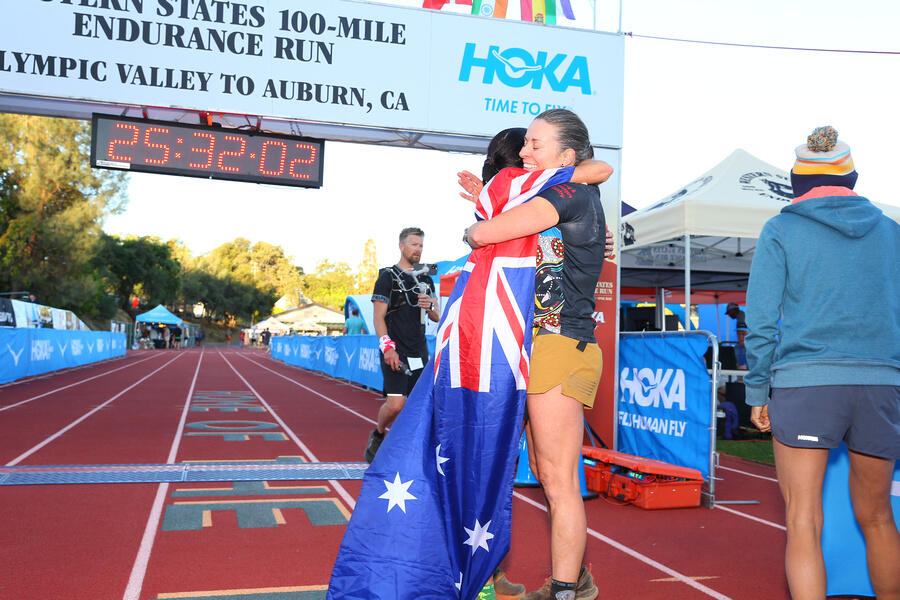
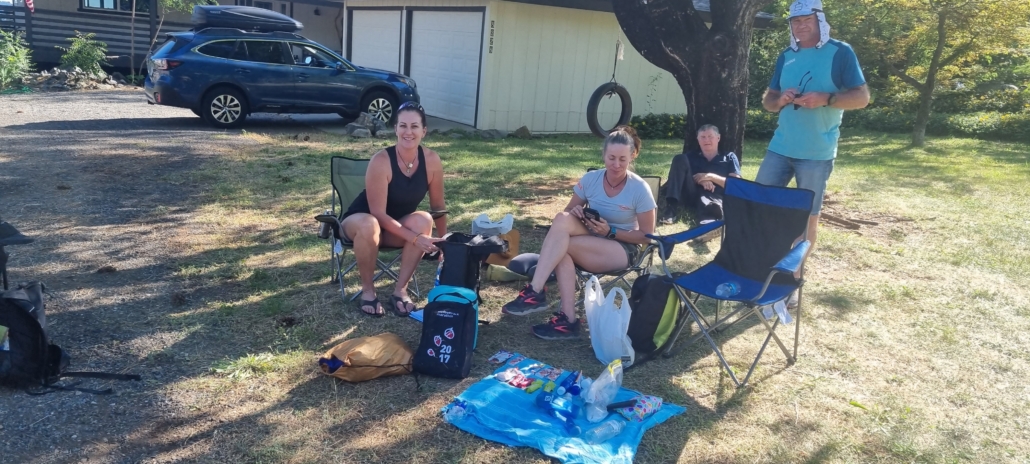

To all the volunteers and race organisers – this is truly a world class event – what you do out there is amazing and we runners appreciate it so much.
And mostly I want to thank Marc – you know I couldn’t do any of this without you. I love you.
I’m stoked to be able to say I am a Western States Finisher!
NOTES:
Shoes: HOKA Tecton X first 100km then HOKA Speedgoat 5’s to the finish
Socks: Steigan x 2
Shorts: T8 x 2
Top: Salomon
Pack/Hydration: Salomon 10lt
Hat: BOCO
Nutrition: Spring Energy – Wolfpak, Awesome Sauce, Canaberry. Aid station bits and pieces
Fluids: Hi 5 Energy Source and GU Roctane. Ginger ale and sparkling water and hot chicken broth




